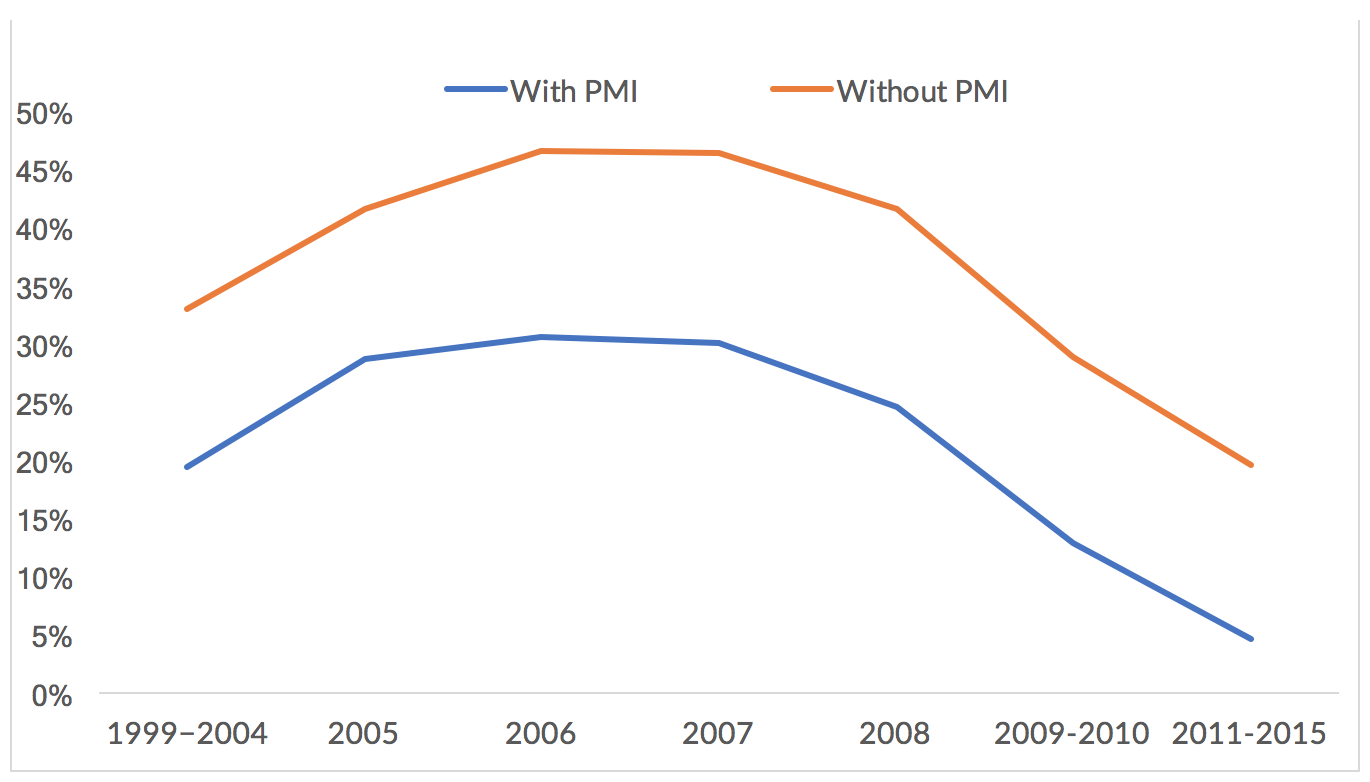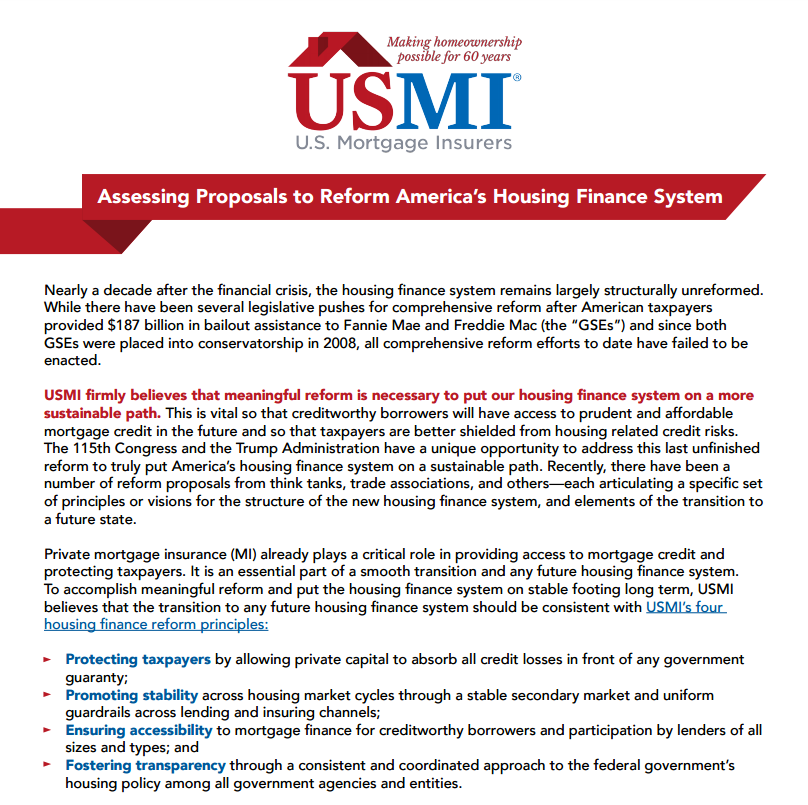Report Shows Agency’s Financial Reserves Weakening
WASHINGTON — Today, the Federal Housing Administration (FHA) released its “Annual Report to Congress Regarding the Financial Status of the Mutual Mortgage Insurance Fund (MMIF) Fiscal Year 2017.” The following statement can be attributed to Lindsey Johnson, USMI President and Executive Director:
“The Federal Housing Administration today released its 2017 annual report to Congress on the financial status of its MMIF. According to the report, the MMIF stands at 2.09 percent, down from 2.35 percent last year and now just slightly above the statutory requirement of 2 percent. The FHA has taken important steps in recent years to improve its financial stability after requiring a $1.7 billion government bailout in 2013 when the agency did not have the necessary capital to cover losses, though more needs to be done. With more than $1.2 trillion in mortgage credit risk, the FHA must enhance its financial strength to continue to serve the borrowers who need it the most.
“The FHA is a critical part of the housing finance system. While there have been calls to reduce FHA insurance premiums, today’s report makes clear that had this happened, the fund would be at 1.76 percent and undercapitalized. The FHA should resist calls for significant policy changes, such as reducing the cost of its insurance or cancelling the collection of insurance premiums while the FHA insurance protection remains in-force on a mortgage. This will help the agency rebuild its financial strength.
“Now is the time for the FHA to refocus on its core mission, scaling back from the oversized role it played during the recession so that it can return to serving low-to-moderate income individuals who need the FHA’s 100-percent government backed loans the most. Today borrowers have low down payment options through the conventional market backed by private mortgage insurance. Private mortgage insurers put their own capital at risk, paying more than $50 billion in claims since the financial crisis, and have all implemented new higher robust capital standards. USMI looks forward to working with Congress and the Administration to establish a coordinated and consistent housing policy so that private capital can shoulder more of the credit risk in the housing markets, while FHA and the private sector act in the marketplace together to ensure borrowers have access to safe, sustainable and affordable mortgage options. Private MI has served as a reliable and affordable credit enhancement tool for more than 25 million American families for 60 years.”
###
U.S. Mortgage Insurers (USMI) is dedicated to a housing finance system backed by private capital that enables access to housing finance for borrowers while protecting taxpayers. Mortgage insurance offers an effective way to make mortgage credit available to more people. USMI is ready to help build the future of homeownership. Learn more at www.usmi.org.












